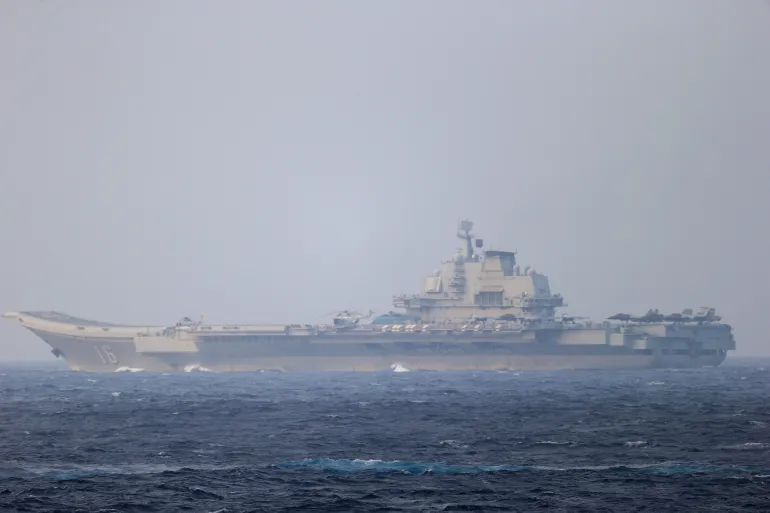S Korea, Japan scramble warplanes in response to Russia, China air patrol | Military News
Seoul’s Joint Chiefs of Staff said Russian, Chinese planes entered its air defence zone during the joint exercise.
South Korea and Japan separately scrambled fighter jets after Russian and Chinese military aircraft conducted a joint air patrol near both countries.
Seven Russian and two Chinese aircraft entered South Korea’s Air Defence Identification Zone (KADIZ) at approximately 10am local time (01:00 GMT) on Tuesday, according to the office of the Joint Chiefs of Staff in Seoul.
Recommended Stories
list of 3 itemsend of list
The planes, which included fighter jets and bombers, were spotted before they entered the KADIZ – which is not territorial airspace but where planes are expected to identify themselves – and South Korea deployed “fighter jets to take tactical measures in preparation for any contingencies”, according to reports.
The Russian and Chinese planes flew in and out of the South Korean air defence zone for an hour before leaving, the military said, according to South Korea’s official Yonhap news agency.
On Wednesday the defence ministry said that a diplomatic protest had been lodged with representatives of China and Russia over the entry of their warplanes into South Korea’s air defence zone.
“Our military will continue to respond actively to the activities of neighbouring countries’ aircraft within the KADIZ in compliance with international law,” said Lee Kwang-suk, director general of the International Policy Bureau at Seoul’s defence ministry.
Japan separately deployed military aircraft to “strictly implement” air defence measures “against potential airspace violations”, following the reported joint patrol of Russia and China, Japanese Minister of Defence Shinjiro Koizumi said.
In a statement posted on social media late on Tuesday, Koizumi said two Russian “nuclear-capable Tu-95 bombers” flew from the Sea of Japan to the Tsushima Strait, and met with two Chinese jets “capable of carrying long-range missiles”.
At least eight other Chinese J-16 fighter jets and a Russian A-50 aircraft also accompanied the bombers as they conducted a joint flight “around” Japan, travelling between Okinawa’s main island and Miyako Island, Koizumi said.
“The repeated joint flights of bombers by both countries signify an expansion and intensification of activities around our country, while clearly intending to demonstrate force against our nation, posing a serious concern for our national security,” he added.
9日(火)の午前から夕方にかけて、ロシアの核兵器搭載可能な爆撃機Tu-95×2機が日本海→対馬海峡を飛行し、中国の長射程ミサイルを搭載可能な爆撃機H-6×2機と東シナ海において合流したあと、沖縄本島・宮古島間→太平洋の四国沖まで我が国周辺を共同飛行しました。… pic.twitter.com/6RcWJbM99b
— 小泉進次郎 (@shinjirokoiz) December 9, 2025
Koizumi’s statement comes just days after he accused Chinese fighter jets on Sunday of directing their fire-control radar at Japanese aircraft in two separate incidents over international waters near Okinawa.
On Monday, Japan’s Ministry of Defence said that it had monitored the movements of the Chinese aircraft carrier Liaoning and accompanying support vessels near Okinawa since Friday, adding that dozens of takeoffs and landings from Chinese aircraft on the carrier were monitored.
Japan said it was the “first time” that fighter jet operations on a Chinese aircraft carrier had been confirmed in waters between Okinawa’s main island and Minami-Daitojima island to the southeast.

China’s Ministry of National Defence said on Tuesday that it had organised the joint air drills with Russia’s military according to “annual cooperation plans”.
The air drills took place above the East China Sea and western Pacific Ocean, the ministry said, calling the exercises the “10th joint strategic air patrol” with Russia.
Moscow also confirmed the joint exercise with Beijing, saying that it had lasted eight hours and that some foreign fighter jets followed the Russian and Chinese aircraft.
“At certain stages of the route, the strategic bombers were followed by fighter jets from foreign states,” the Russian Defence Ministry said.
Since 2019, China and Russia have regularly flown military aircraft near South Korean and Japanese airspace without prior notice, citing joint military exercises.
In November 2024, Seoul scrambled jets as five Chinese and six Russian military planes flew through its air defence zone. In 2022, Japan also deployed jets after warplanes from Russia and China neared its airspace.
China and Russia have expanded military and defence ties since Moscow’s full-scale invasion of Ukraine nearly four years ago. Both countries are also allies of North Korea, which is seen as an adversary in both South Korea and Japan.
